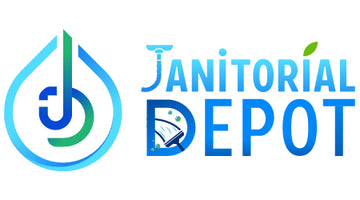Janitorial Depot
Garbage Bin Liner 54lt Extra Heavy Duty - Tough & Reliable Waste Solution
Regular price From $7.95 AUDUnit price /UnavailableJanitorial Depot
Garbage Bin Liner Heavy Duty 73 Ltr - Tough & Reliable Waste Solution
Regular price From $8.20 AUDUnit price /UnavailableJanitorial Depot
Garbage Bin Liner 73L Extra Heavy Duty
Regular price From $8.95 AUDUnit price /UnavailableJanitorial Depot
Bin Liner 82L Heavy Duty - Strong and Reliable Waste Solution
Regular price From $6.00 AUDUnit price /UnavailableJanitorial Depot
Garbage Bin Liner Extra Heavy Duty 82L
Regular price From $8.99 AUDUnit price /UnavailableJanitorial Depot
Garbage Bin Liner Heavy 120Lt - Strong & Reliable
Regular price From $7.50 AUDUnit price /UnavailableJanitorial Depot
Garbage Bin Liner Extra Heavy Duty 120L - 100 box
Regular price $30.00 AUDUnit price /UnavailableJanitorial Depot
Garbage Bag - Bin Liner 240Lt Extra Heavy Duty
Regular price From $13.50 AUDUnit price /UnavailableJanitorial Depot
Tidy Garbage Bin Liners White Small 18 Ltr - 1000 box
Regular price $26.40 AUDUnit price /UnavailableJanitorial Depot
Garbage Tidy Bin Liners Medium 27 Ltr 1000 box
Regular price $27.00 AUDUnit price /Unavailable- Up to 14% off
Janitorial Depot
Tidy Garbage Bin Liners Large 36 Ltr 1000 box
Sale price $36.00 AUD Regular price $41.95Unit price /Unavailable
Heavy Duty and Everyday Bin Liners in All Sizes
How are LDPE and HDPE bin liners different?
How are LDPE and HDPE bin liners different?
LDPE (Low-Density Polyethylene) bin liners are thicker, more stretchable, and flexible, making them ideal for heavy or irregular waste. HDPE (High-Density Polyethylene) bin liners are thinner, stiffer, and more economical, best for lighter, uniform rubbish such as office or restroom waste.
Which bin liner is stronger against punctures?
Which bin liner is stronger against punctures?
LDPE bin liners are highly resistant to tears and punctures thanks to their thickness and elasticity, making them suitable for jagged or heavy waste. HDPE liners are durable for light-duty use but less effective with rough or sharp rubbish.
What thickness (microns) bin liner do I need?
What thickness (microns) bin liner do I need?
It depends on what you’re throwing away:
- Light waste (office papers): 10–12 microns
- General waste (kitchen rubbish): 18–25 microns
- Heavy or sharp waste: 25 microns or more
Thicker liners are stronger and less likely to tear.
Are LDPE bin liners better for heavy loads?
Are LDPE bin liners better for heavy loads?
Yes. LDPE liners are designed to handle heavy, irregular, or sharp rubbish such as catering refuse, construction debris, and food waste. Their stretchability reduces the risk of splitting or tearing.
How do I choose the right size bin liner?
How do I choose the right size bin liner?
Use this quick rule:
Width = (Bin circumference ÷ 2) + 5–10 cm allowance
Length = Bin height + 20–30 cm overhang for tying
Typical guides: 27–36 L (small office), 54–73 L (medium), 120 L Small wheelie-bin liners, 240 L wheelie-bin liners.
What should I use for kitchen, hospitality, or medical areas?
What should I use for kitchen, hospitality, or medical areas?
Kitchen/hospitality: Choose leak-resistant, thicker LD/LLD liners.Clinical/regulated waste: Follow your facility and state regulations (e.g., colour coding, printed compliance markings). Use approved clinical waste bags where required, as general bin liners aren’t a substitute.
How do I reduce split bags and leaks?
How do I reduce split bags and leaks?
Match size & thickness to the load.
Use LD/LLD for sharp/irregular waste.
Don’t overfill; leave enough overhang to twist and tie.
Double-bag for heavy/abrasive loads.
Use a liner cradle or bin stand to prevent snagging on rims.
How should I store bin liners? Do they expire?
How should I store bin liners? Do they expire?
Keep cartons cool, dry, and out of sunlight. Avoid heat sources.
- Conventional (HD/LD/LLD): Long shelf life if sealed and stored well.
- Compostable: Use within 6–12 months (check pack), as performance declines with heat/humidity.































